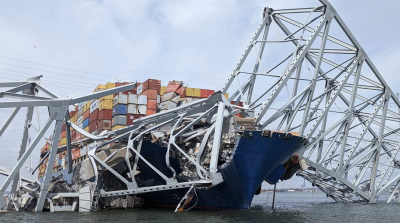Last July, California’s Governor Jerry Brown issued Executive Order B-32-15 requiring development of a “Sustainable Freight Action Plan.” This extensive planning effort includes seven regulatory agencies, from the California Air Resources Board (CARB) to the state’s department of transportation. The goal is to improve freight efficiency, transition to zero-emission technologies, and increase the competitiveness of California’s freight system.
Proposals will likely cover every aspect of freight handling and operations, from marine and commercial harbor craft (CHC) to power generation at port facilities to more traditional control programs aimed at truck and rail emissions. The plan is on a quick timeline, with a draft due in April and the final report to be delivered to the Governor in July.
State-wide, air pollution from CHC and other marine sources is low, at least compared to the land-side. In addition, CHC emissions have dropped considerably since 2008 when regulations for marine engines were tightened, a process still ongoing. Phase-in for EPA’s Tier 4 regs, for example, just started in 2014. In addition, CHC are included in California’s ultra-low sulfur diesel rule.
However, in localized areas, the Port of Los Angeles, for example, or the inland Port of Stockton, at the north end of the San Joaquin Valley — two sections of the State with seemingly irresolvable air quality issues — every source of air pollution is under constant review. Just as critically, the state’s regulatory scope now includes greenhouse gases; the state aims to reduce greenhouse emissions to 1990 levels by 2020.
The Port of Los Angeles estimates that harbor craft emitted 705.2 tons of nitrogen oxides and 48,067 tons of CO2 in 2013. To meet new environmental goals, should those numbers be lower? If so, by how much and what are the best ways to reduce them?
Sustainable Freight presents concerns beyond engine and fuel specifications. In a way, for harbor craft owners/operators — really, all transportation managers — new concerns raised by Sustainable Freight may be more challenging than older requirements focused mainly on engines and fuels.
These broader issues arise because Sustainable Freight development includes operational controls that seek reduced air emissions via an aggregate, big-picture approach. Such concepts propose that a port or a logistics center or a freight terminal should be viewed as a singular “air shed,” if you will, or a “bubble,” in which activities are regulated, not just emission sources.
Regulators may propose, for example, that container access, travel speeds and controlled operating hours can reduce overall pollution and cut energy more than another round of engine upgrades. “System efficiency” is a high priority within the plan, and an activity-based approach raises many issues, including competitive ones. Skilled customer service may get knocked down a notch if individual operations face new limits.
As noted, watch for the Sustainable Freight draft in April. Roll-out will include programmatic ideas and demonstration projects. CARB wants your comments. Take a close look even if you’re not operating in California – just like the freight brought ashore at Golden State ports, these regulatory ideas frequently move eastward!





